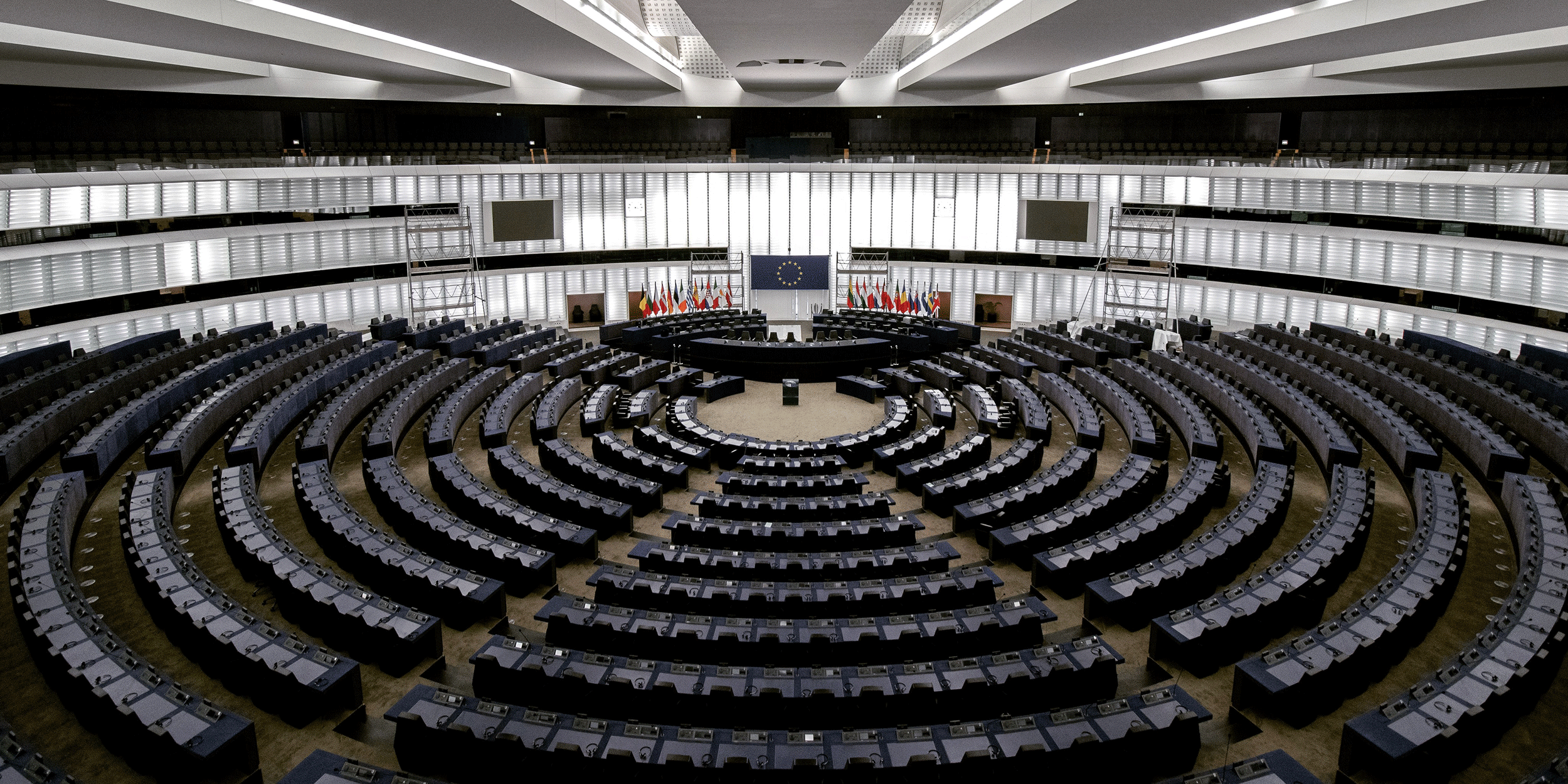Matthew Pennill graduated with a BSc Government and Economics from the Department of Government in 2015. He subsequently completed an MSc Economics at Universitat Pompeu Fabra and will be joining a global financial services firm in 2017 as a Macro Strategist. His research was highly commended in the Poster category at the LSE Research Festival 2016. We asked Matthew a few questions about his poster, titled ‘Expectations, Preferences, and Voter Turnout: An application of Prospect Theory to the Calculus of Voting’.
Congratulations on having your poster highly commended at the LSE Research Festival 2016! Can you explain to us a bit about your initial ideas and the thought process behind putting the poster together?
I initially put the poster together for a BCUR event in Parliament earlier this year, where a friend and I presented our Government Department undergraduate dissertations: https://blogs.lse.ac.uk/government/2016/02/09/govblog-podcast-1-posters-in-parliament-2016/.
The process of translating the dissertation into a poster was not entirely straightforward due to the theoretical nature of my research.
My first priority was to try to make the research topic as accessible as possible to people without a political science or economics background, and that’s how I came to the idea of using a “word cloud”. My hope was that this would draw people towards the poster and generate an initial level of interest by highlighting the importance to the research of words and concepts such as voting, turnout, and behaviour.
From there my aim was to guide the viewer through a more accessible and condensed version of the research paper, by discussing my aims and the background to the research, the theoretical foundations and predictions borne out by the conceptual model developed, the empirical analysis, and finally the key conclusions and implications.
The subject of your poster is “An Application of Prospect Theory to the Calculus of Voting”. What is Prospect Theory and how do you apply it to the Calculus of Voting?
Prospect Theory and the Calculus of Voting are the two theories I combined in the research to generate a new model of voters’ turnout behaviour.
Prospect Theory is a model of individual decision-making that was first presented by Daniel Kahneman and Amos Tversky in 1979. The theory analyses how individuals make decisions under “risk” – that is, when there is uncertainty over the outcome of the various alternative actions individuals can choose from – and marks a distinct break from traditional models of choice employed in economics and formal political theory.
A key contribution of Prospect Theory is its theoretical formalization of utility as reference dependent – that is to say that the amount of pleasure one gains from a particular event depends on one’s original expectations for that event. To take a simple example, while traditional economic theory (expected utility theory) says that two identical supporters of a football team will enjoy the same level of “happiness” when their team wins, Prospect Theory implies that the two supporters’ a priori expectations also matter: if one predicts the team to lose he will be happier than his fellow supporter who expected them to win anyway. Expectations also have an important implication for risk attitudes and consequently behaviour, according to Kahneman and Tversky.
This role of expectations in utility has considerable implications for turnout choice, I argued through the model developed in the research. Specifically, individuals decide whether or not to turn out by weighing the potential costs and benefits of voting (this is the “Calculus of Voting”). Given that the benefits of voting depend on which candidate wins, however, there is uncertainty inherit in the voting calculus, and thus risk attitudes matter for predicting voting behaviour. Furthermore, two identical voters who differ only in their expectations of the election’s outcome can have different attitudes to risk and thus different propensities to turn out, I argued.
Specifically, my theoretical model predicted that voters who expected their preferred candidate to win would be more likely to turn out to vote than those who didn’t expect their preference to win. I tested this hypothesis using a couple of different econometric models and controlling for other standard empirical determinants of turnout (such as household income, education, and previous turnout behaviour).
Could you tell us about the empirical analysis you conducted as outlined in the poster?
The aim of the empirical analysis was to test whether the model developed in the research paper could explain voters’ turnout choice. To do so, I made use of survey data from five US presidential elections, analysing over 60,000 data points from the American National Election Studies database. Using the survey data, I was able to analyse individuals’ expectations (which candidate they expected to win the presidency), preferences (which candidate they wanted to win), and their turnout behaviour (whether or not they actually voted in the election). I then tested my conceptual model using these three key pieces of information and harnessing linear and non-linear econometric techniques.
The first takeaway from my empirical analysis was that, for standard determinants of turnout, the results echoed those of previous empirical studies. That is to say that previous turnout behaviour was by far the largest determinant of whether or not an individual turns out today, and that other factors such as education, household income, and gender were also important.
The major insight of the study, however, was that preferences and expectations matter. Specifically, citizens expecting their preferred candidate to win were significantly more likely to turn out to vote than those individuals who did not expect their preference to be victorious. This finding was robust to a number of different econometric models and thus provided strong support for the predictions of the theoretical model outlined in my research.
What are the implications and further questions that need to be addressed, following your research?
The first conclusion to be drawn from the analysis is the apparent importance for turnout behaviour of the interaction between expectations and preferences. While the role of the interaction between expectations and preferences is only modestly important in predicting turnout behaviour, it adds to a patchwork of theories and empirical analyses that help political scientists to more fully understand turnout behaviour.
My findings can also be linked to another corner of the empirical voting literature, which analyses the “bandwagon effect”. This is a phenomenon whereby individuals tend to have a preference for the party or candidate that they expect to win an election. The results from my empirical analysis suggest that those who “jump on the bandwagon” are more likely to vote than those who don’t exhibit bandwagon behaviour – a finding that is consistent with other authors’ analyses.
More broadly, the major implication of the research in my view is its demonstration of how behavioural economic insights can be applied to traditional political science problems and lead to interesting and novel conclusions. Such combinations of formal political theory and post-expected utility theory models of individual decision-making represent an area of research in which there are plenty of interesting avenues worthy of exploration.
A final area worthy of inquiry is the exact relationship between expectations and preferences in an electoral context. Specifically, the direction of causality between preferences and expectations is ambiguous, and theories like the “mere exposure effect” further complicate the process of disentangling these two cognitive processes. This debate around preferences, expectations, and behaviour extends far beyond political science, though and in my opinion represents a great challenge to a large portion of social science research.
SELECTED BIBLIOGRAPHY:
Blais, A. (2000), “To Vote or Not to Vote? The Merits and Limits of Rational Choice Theory”. Pittsburgh: University of Pittsburgh Press.
Downs, A. (1957), “An Economic Theory of Democracy”. New York: Harper & Row.
Ferejohn, J. A., and Fiorina, M. P. (1974), “The Paradox of Not Voting: A Decision Theoretic Analysis,” The American Political Science Review, Vol. 68, No. 2 (525-536).
Hortala-Vallve, R. and Esteve-Volart, B. (2011), “Voter Turnout in a Multidimensional Policy Space,” Economics of Governance, Vol. 12, No.1 (25-49).
Kahneman, D. and Tversky, A. (1979), “Prospect Theory: An Analysis of Decision under Risk,” Econometrica, Vol. 27, No. 2 (263-292).
Kőszegi, B., and Rabin, M. (2006), “A Model of Reference-Dependent Preferences,” The Quarterly Journal of Economics, Vol. 121, No. 4 (1133-1165).

Matthew Pennill graduated with a BSc Government and Economics from the Department of Government in 2015. He subsequently completed an MSc Economics at Universitat Pompeu Fabra and will be joining a global financial services firm in 2017 as a Macro Strategist.
Note: this article gives the views of the author, and not the position of the LSE Department of Government, nor of the London School of Economics.







